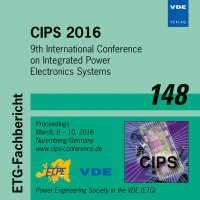High temperature thermal cycling performance of DBA, AMB and thick film power module substrates
Konferenz: CIPS 2016 - 9th International Conference on Integrated Power Electronics Systems
08.03.2016 - 10.03.2016 in Nürnberg, Deutschland
Tagungsband: CIPS 2016
Seiten: 5Sprache: EnglischTyp: PDF
Persönliche VDE-Mitglieder erhalten auf diesen Artikel 10% Rabatt
Autoren:
Hamilton, Dean. P.; Mawby, Philip (School of Engineering, University of Warwick, Coventry, United Kingdom)
Riches, Steve (GE Aviation Systems, Newmarket, United Kingdom)
Meisser, Michael (Institute for Data Processing and Electronics, Karlsruhe, Institute of Technology (KIT), Karlsruhe, Germany)
Mills, Liam (Semelab TT Electronics, Lutterworth, United Kingdom)
Inhalt:
In this work, a range of candidate materials for power module substrates have been evaluated and tested for their reliability and performance for use in high temperature power modules with a peak operating temperature of 350 °C. The substrates included commercially available aluminium and copper DBC/DBA and AMB variants, as well as copper and silver thick film printed equivalent substrates made using commercially available pastes and ceramic sheets. The results and failure analysis have shown that the high temperature performance (thermal cycling lifetimes) is dictated first by the initial ductility and work hardening of the metal, then the fracture toughness of the ceramic material and then, finally, by the bonding mechanism. Although the thick film substrates have the lowest peeling strength of all those tested, the thermal cycling performance was found to be approximately the same as for the Si3N4 copper AMB substrates, which we attribute to the porous nature of the thick films. Work is currently underway to determine the cycling lifetime versus printed thick film thickness up to 370 µm.


